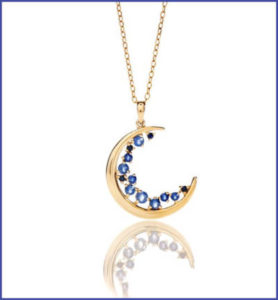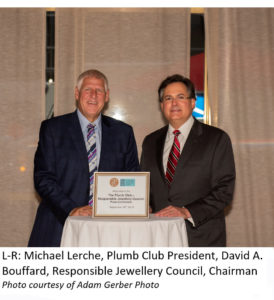TransparencyThrough Technology
Digital technology is fast emerging in the jewelry industry.
The vast majority of jewelry consumers today want ethically sourced jewelry and, more importantly, to know the story behind it.
A 2015 Nielsen report found that nearly 75 percent of global Millennials and 66 percent of all consumers are willing to spend more on a product if it comes from a sustainable brand. The jewelry industry is embracing this trend, with more stakeholders committing to practices that uphold human rights, labor rights, environmental impact, and mining practices.
 That’s a good thing say thought leaders like Mark Hanna, CMO for the Richine Group. Consumers, he says, have come to expect a lineage of information prior to purchasing.
That’s a good thing say thought leaders like Mark Hanna, CMO for the Richine Group. Consumers, he says, have come to expect a lineage of information prior to purchasing.
Digital technology known as blockchain, around since 2008, is fast emerging in the jewelry industry that will not only allow consumers to see the supply chain more clearly, but to also know it is credible and verified.
Essentially, the technology allows for blocks of data to be shared as a database or digital ledger and stored across multiple computer networks. IBM has emerged as a powerhouse in blockchain technology, developing projects across industries, including jewelry. It began collaborating in 2017 with major diamond and jewelry companies globally on an initiative called TrustChain, a consortium for which the Richline Group is a founding member.
Hanna says the move made sense for Richline given its commitment to social conscience, spelled out in its Richline Responsible Initiative. “It is about the 5Ts for suppliers and retailers to provide for consumer ethical concerns: track, trace, transparency, truthful, and trusted,” he says. “Socially responsible sourcing is imperative in the jewelry industry. The blockchain protocol/platform provides the technical system to optimize a chain of custody documentation inclusive of every participant in a product’s journey.”
TrustChain is not an open, decentralized system, Hanna explains, but rather a platform that is private and requires permission to join. Only those fully evaluated for best practices with third-party confirmation, such as being a certified member of the Responsible Jewellery Council (RJC), can join the network.
Importance of RJC Membership
The Plumb Club, a current RJC association member, is the first organization of its kind to require its members to join and follow the RJC Code of Practices. More than half of The Plumb Club’s 42 members are already members. The RJC will collaborate with current and future Plumb Club members to ensure they adopt the RJC Code of Practices and effectively communicate their membership status.
“Our new by-law confirms The Plumb Club’s vision of being a responsible supply side organization recognized for leadership, adding value, and positively impacting the jewelry industry,” cheers Michael Lerche, Plumb Club President. “We strongly believe that any jewelry retailer who buys product from a non-RJC member is taking a very serious and unnecessary risk. Buying product from a Plumb Club member will greatly mitigate that risk.”
The RJC verifies its Code of Practices through membership in the ISEAL Alliance. RJC members must become certified against the Code of Practices through a third party, independent certification process. RJC’s Code is aligned with international standards from the Organization of Economic Co-Operation and Development and the United Nations Sustainable Development Goals.
Building Accountability
“Having a standardized universal code of practices throughout our industry that the retailer, consumer and even our government, can rely upon to guarantee that these products are the most responsibly sourced and ethically produced in the marketplace is critical,” says Lerche, who calls upon the entire jewelry industry to support RJC and become a certified member.
As the industry seeks to raise the collective responsibility and provenance practices of those in it to new heights,  Hanna believes technology like blockchain will prove important to the future of our industry in providing full transparency throughout the supply chain.
Hanna believes technology like blockchain will prove important to the future of our industry in providing full transparency throughout the supply chain.
The technical challenges, Hanna notes, are compatibility issues between various blockchain protocols, which he expects will be resolved as the technology develops. Gartner Inc., a leading research and advisory company, estimates a five to 10-year time-scale before blockchain enters the mainstream. Similar to the Internet, there will be a shakeout of providers.
But Hanna believes that blockchain technology will make its impact eventually, especially as there is increasing pressure for documented proof of ethical practices, which he thinks is fast becoming an industry-wide mandate. Over time, responsible sourcing will become a normal part of doing business.










